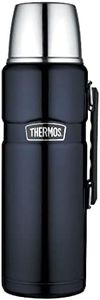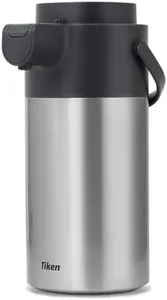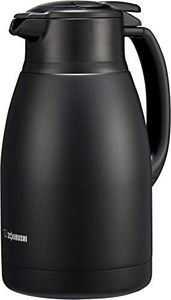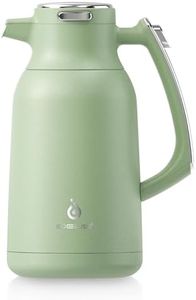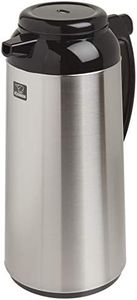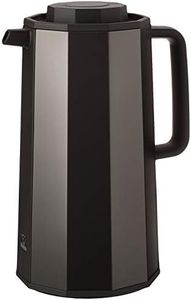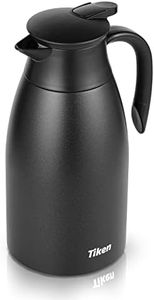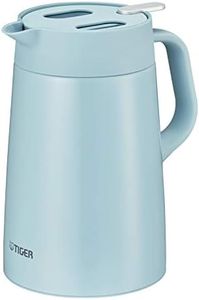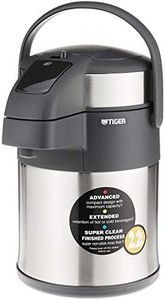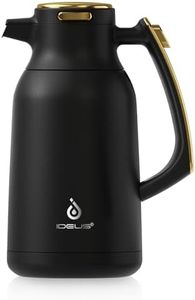We Use CookiesWe use cookies to enhance the security, performance,
functionality and for analytical and promotional activities. By continuing to browse this site you
are agreeing to our privacy policy
10 Best Coffee Thermal Carafes
From leading brands and best sellers available on the web.Buying Guide for the Best Coffee Thermal Carafes
Choosing the right thermal carafe for your coffee is all about understanding your needs and the situations in which you'll use it most. Whether you want to keep coffee hot at home, at the office, or on outdoor trips, the best carafe will combine effective thermal retention, convenience, and durability. Think about factors like how much coffee you usually serve, how long you want it to stay hot, and how easy it needs to be to clean or transport. Taking a bit of time to learn about the key features will help you find a carafe that matches your lifestyle perfectly.CapacityCapacity refers to how much liquid the carafe can hold, usually measured in ounces or liters. This is important because if your carafe is too small, you'll need to keep refilling it, while an overly large one may waste space or let coffee go stale. Small carafes (under 1 liter) suit solo drinkers or small gatherings, medium sizes (1 to 1.5 liters) fit families or offices, and large models (above 1.5 liters) are great for big groups or events. Consider how many cups you usually serve in a sitting to pick the capacity that fits your daily habits.
Thermal RetentionThermal retention describes how long the carafe can keep coffee hot (or cold) without significant temperature loss. It depends on the carafe’s insulation technology, often single- or double-walled stainless steel, with vacuum insulation being the most efficient. Carafes with higher retention need less frequent reheating and keep flavor fresh for hours. If you only need an hour or two of warmth, a basic model will do; for all-day heat, look for advanced insulation. Match your typical drinking duration to the carafe's advertised heat retention time.
Lid MechanismThe lid mechanism includes how the carafe seals and pours. Options range from simple screw tops to press levers or push-button lids. A good lid prevents heat escape and spills. Screw lids are great for transport but may be less convenient to operate quickly, while push-button lids are easy for pouring but might leak if not closed well. Think about convenience (frequent pouring vs. travel), and choose a lid style that fits your usual scenario.
MaterialThermal carafes are usually made of stainless steel, glass, or sometimes plastic. Stainless steel is most common for its durability and heat retention, glass is better for seeing the level inside but breaks easily, and plastic is lightweight but less effective at keeping drinks hot. If you need something rugged for daily use or travel, stainless steel is a top choice; if you care about aesthetics and gentler use, glass might appeal to you. Match the material to your lifestyle and care preferences.
Cleaning and MaintenanceThis refers to how easy it is to wash and maintain the carafe. Some carafes have wide mouths for easy access, others may have parts that are dishwasher-safe, while some require hand washing. If you use the carafe for more than coffee (like tea or milk), easy cleaning prevents flavor transfer. If you dislike handwashing or have tight schedules, select one that's clearly marked as easy to clean or with fewer nooks where residue can build up.
Pouring MechanismPouring mechanism refers to how the coffee is dispensed—whether by a traditional spout, a lever, or a button. A well-designed spout prevents dribbling, while a one-hand pouring mechanism adds convenience for busy routines. For those serving coffee to guests or in offices, an easy-to-use spout or lever can make pouring quicker and less messy. Think about who will use it and how frequently; more automated mechanisms suit frequent servers, while a regular spout is fine for personal use.
